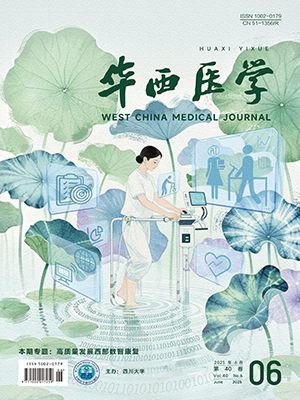【摘要】 目的 了解北京地区400例新型甲型H1N1流感患者的流行病学和临床特征,总结规律,进一步指导临床诊治。 方法 2009年5-12月期间,收治400例甲型H1N1流感确诊病例,主要采用描述性流行病学方法对患者资料进行回顾性分析,并运用单因素方差分析的方法对结果进行检验。 结果 患者以青年和儿童人群为主,47.0%的患者有明确甲型H1N1流感接触史,主要症状包括发热(98.8%)、咳嗽(85.8%)、咽痛(58.5%)。咽部充血(94.0%)和扁桃体肿大(49.5%)为主要体征。外周血白细胞正常或偏低,349例(82.3%)患者血清铁降低,268例(72.6%)患者C反应蛋白升高。在发病后不同时间内给予奥司他韦治疗的患者发热持续时间和咽拭子的阴转时间有显著差异(P lt;0.001)。 结论 新型甲型H1N1流感发病多以青年和儿童人群为主,以流感样症状为主,多数症状轻微,预后良好,C反应蛋白和血清铁的变化可能对于早期诊断有指导价值,奥司他韦早期抗病毒治疗可以缩短病程。
【Abstract】 Objective To investigate the clinical and epidemiologic characteristics of pandemic influenza A (H1N1) virus infection in Beijing. Methods The epidemiological information and clinical characteristics of 400 patients with pandemic influenza A (H1N1) virus infection hospitalized in Beijing 302 Hospital from May to December, 2009 were analyzed retrospectively by descriptive epidemiology. One-way ANOVA was used to assess the results. Results H1N1 virus infection preferentially affected adolescents and young adults. The mean age of the patients was 23 years. A total of 189 (47.0%) of the patients had an identifiable epidemiologic link to another confirmed patient. The most common symptoms were fever (98.8%), cough (85.8%) and sore throat (58.5%). The main physical signs were pharyngeal portion congestion (94.0%) and antiadoncus (49.5%). The number of leukocytes in the peripheral blood was normal or low. The decreased serum iron and elevated C-reaction protein were found in 82.3% and 72.6% of the patients. There was significant difference in the duration of fever and viral shedding from throat swabs among the patients who accept the antiviral medication within the different time. Conclusion H1N1 virus infection preferentially affects adolescents and young adults, and presents with influenza-like illness. The clinical course of H1N1 virus infection is generally mild. The change of C-reaction protein and serum iron may be favorable for the diagnosis of H1N1. Early antiviral treatment may shorten the duration of fever and viral shedding.
Citation: XIE Yangxin,JIANG Tianjun,NIE Weiming,FAN Rong,LI Wengang,Zhang Xin,YAN HuiYing,QIU Bo,ZHOU Zhiping,ZHAO Min. Epidemiologic and Clinical Characteristics of 400 Patients with H1N1 Influenza A in Beijing. West China Medical Journal, 2011, 26(1): 1-3. doi: Copy
Copyright © the editorial department of West China Medical Journal of West China Medical Publisher. All rights reserved




